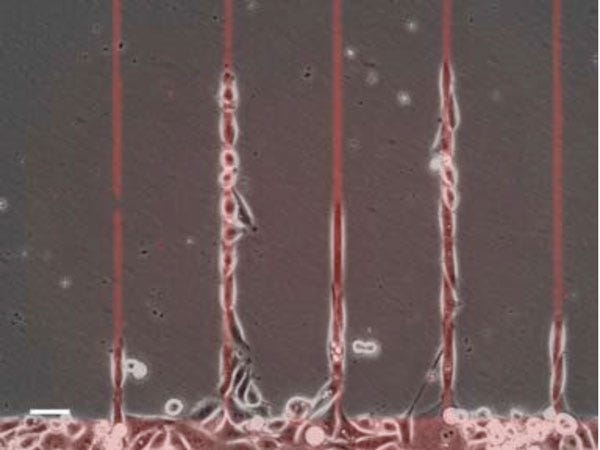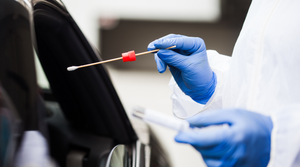New Light Shed on Wound Healing Process
December 18, 2013
Of passing interest to anyone who's ever watched a small cut on their finger heal but perhaps of great interest to those in the so-called artificial skin space, National University of Singapore researchers have learned that some skin cells can bridge gaps in the substrate to help form a protective barrier over a wounded area. Their findings were first published online in the journal Nature Materials.
In the abstract, Vedula et al. say, "We show that monolayers of human keratinocytes migrating along functionalized micropatterned surfaces comprising alternating strips of extracellular matrix (fibronectin) and non-adherent polymer form suspended multicellular bridges over the non-adherent areas." It was previously not understood how this healing process, known as re-epithelialization, takes place. Current practice grows artificial skin on a collagen matrix; this new work could lead to more-advanced techniques.
|
Cultured Human Keratinocyte (HaCaT) cells migrate as cell chains and tend to form large tethers or single cells bridging the fibronectin strip and reservoir (arrows). Scale bars 50 ?m. |
It could also lead to improvements in the design of skin regeneration scaffolds. "Our findings suggest that multicellular bridges maintain tissue integrity during wound healing when cell-substrate interactions are weak and may prove helpful in the design of artificial scaffolds for skin regeneration," the authors continued.
Skin research seems to be big in Singapore these days. In September the S$100 million (US$80 million) Skin Research Institute of Singapore was announced. It will be dedicated to research in areas such as skin aging, diseases like eczema, and pigmentation disorders. The institute intends to build a database of Asian skin samples which can be used for scientific studies and testing. Its three founding partners are the Agency for Science, Technology and Research, the National Skin Centre and Nanyang Technological University.
About the Author(s)
You May Also Like



